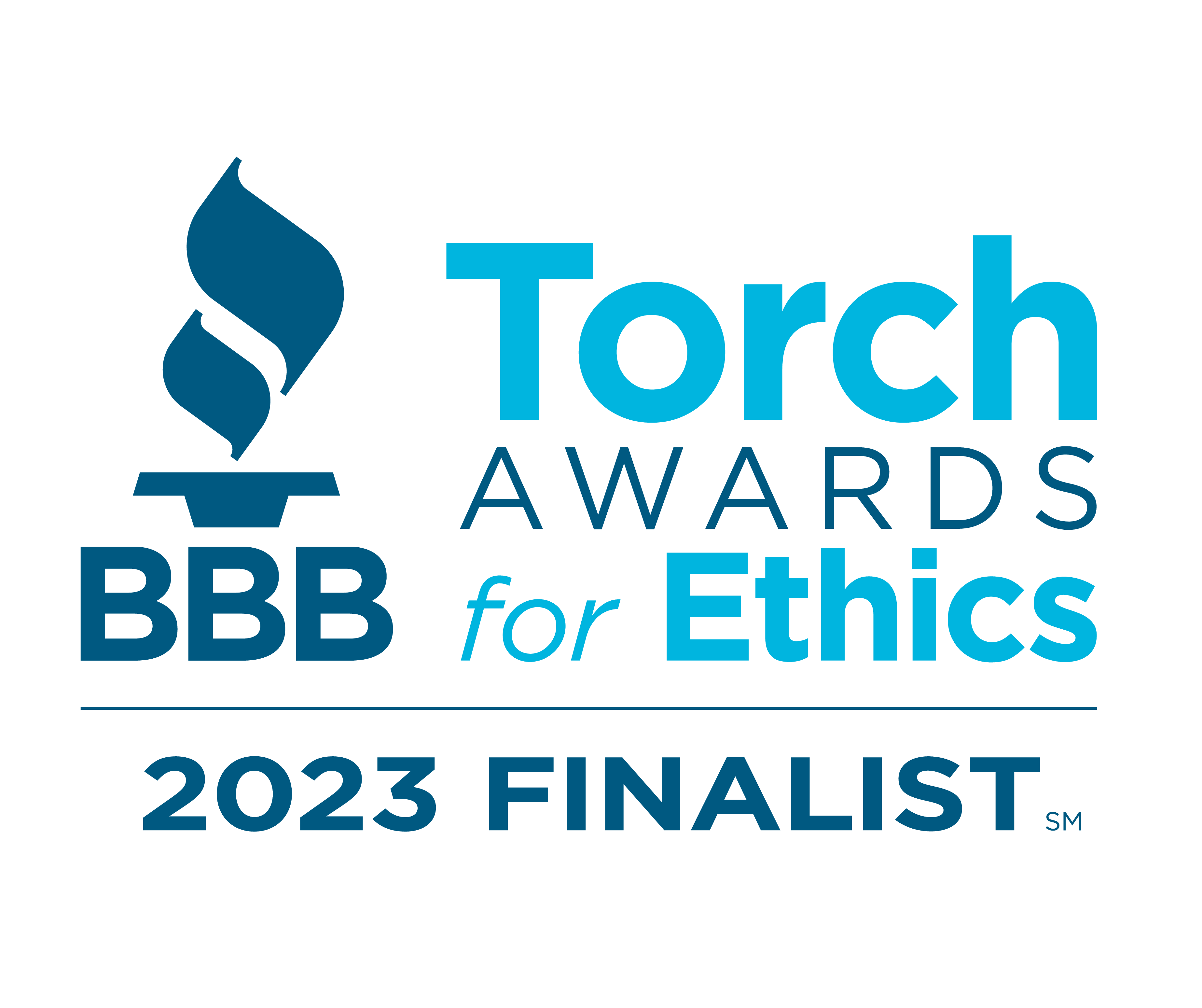Understand itemized deductions and available credits to simplify tax filing and earn a larger refund
Are you concerned about a hefty tax bill in 2024?
Nearly one-third of American taxpayers (31%) said they dread filing their taxes in 2023, according to a new study from Qualtrics on behalf of Intuit Credit Karma. And almost one-quarter worry they will need to take on more debt to cover their tax bill.
Knowing how to leverage tax credits and deductions could be your key to legally dodging tax debt in 2024.
Tax Deductions v. Tax Credits: How Much Can You Save?
People often use the terms deductions and credits interchangeably, but they aren’t the same thing. While both can help you pay less taxes, they affect your tax bill differently.
Tax deductions are subtracted from your taxable income, (also referred to as Adjusted Gross Income or AGI.) Since deductions reduce the amount of income you pay taxes, they can lower your tax bracket, which means you’ll pay a lower percentage, or tax rate.
A tax credit, on the other hand, is directly subtracted from the bottom line amount of taxes you owe to the IRS on Tax Day, which is April 15 this year.
Standard Deductions vs. Itemized?
Roughly 90% of Americans take the standard deduction, which will be $13,850 for individuals and $27,700 for married couples filing jointly in 2024. Those who file as head-of-household can take a standard deduction for 2023 of $20,800. Claiming the standard deduction is easiest, especially if you prefer not to itemize deductions.
However, if the amount of your itemized deductions exceeds the standard deduction amount, it’s worth the time to itemize. You claim your deductions on Form 1040, Schedule A.
If you decide to itemize, you might want to hire a tax professional to ensure you’re maximizing your return while avoiding any actions that could raise a red flag with an IRS enrolled agent and lead to a tax audit.
Tax Deductions That Could Lower Your Taxable Income
Knowing all qualified tax deductions can help you make the right choice regarding itemizing taxes or taking the standard deduction. It can also help ensure you are claiming all the deductions you deserve to lower your tax bill.
Here are some of the itemized deductions you may be entitled to as a W-2 employee who has payroll taxes deducted throughout the year.
Health Savings Account (HSA)
You can contribute to your HSA all the way up until the tax deadline, and claim those deductions in the current filing year. This is a great last-minute strategy if you get to January 1 and need to lower your tax bill.
Medical Costs
If your out-of-pocket medical costs (including co-pays) exceed 7.5% of your Adjusted Gross Income, you can write them off as a tax deduction. Cobra insurance premiums also count toward these deductible medical costs.
Work Clothing and Tools
The IRS has specific rules for W-2 employee deductions. You can deduct the cost of special clothing, such as uniforms, if you would not wear the uniform in other places. For instance, medical scrubs might be tax deductible, but a business suit would not since you could presumably wear it every day.
You can also deduct the cost of tools if they are required for your job and not provided by your employer.
Educator Expenses
Just as other employees can deduct the cost of tools of their trade, teachers can deduct the cost of materials for their classroom, but only up to $300.
Business Travel
Keep those receipts if you attended or plan to attend any out-of-town conferences or meetings, or if you’ll be working away from your primary place of business for less than a year.
“You can deduct travel expenses paid or incurred in connection with a temporary work assignment away from home,” according to the IRS.
Eligible deductions include:
- Airfare
- Hotel
- Taxis/Rideshares
- Laundry or Dry Cleaning
- 50% of Meal Expenses
- Tips Related to Deductible Services
If your employer reimburses travel expenses, you cannot deduct those costs.
Taking a leisurely side quest on your work trip? That’s okay. You can extend a business trip with a few personal days as long as the number of days doing non-business-related activities doesn’t exceed the number of days doing business-related activities.
SALT Deduction
The SALT (State and Local Tax) deduction allows you to deduct property, sales, or income taxes already paid to the government up to $10,000 (single file or married, filing jointly) under the Tax Cuts and Jobs Act. If you’re married, filing separately, the maximum deduction drops to $5,000.
Tax Deductions You Can’t Take as a W-2 Employee
Freelancers and business owners have different guidelines than W-2 employees when it comes to deductible expenses. Here are a few expenses you can’t claim as a W-2 employee:
- Home office deduction
- Health insurance premium costs (if they were paid with pre-tax dollars)
- Deduction for your filing costs (including tax software or tax preparer costs)
- Retirement plans paid with pre-tax dollars
Claiming Tax Credits to Reduce Your Tax Bill
Tax credits reduce your bottom line tax liability. They can turn a tax bill into a hefty tax refund and put a smile on any taxpayer’s face.
There are three types of tax credits:
- Fully Refundable: If you end up with a negative balance after claiming these credits, you’ll receive a refund.
- Non Refundable: This will only reduce your tax liability. There is no refund associated with these types of credits.
- Partially Refundable: If you end up with a negative tax balance after claiming these credits, you’ll receive a partial refund.
Let’s look at the tax credits you might be eligible for in 2024.
Earned Income Tax Credit
The Earned Income Tax Credit (EITC) is a fully refundable credit for low- to moderate-income families. Individuals with earned income may qualify for the credit if they made less than $63,398 and any investment income does not exceed $11,000. Filers must have a valid social security number and be a U.S. citizen or resident alien for the full tax year, according to the IRS.
Residential Clean Energy Credit
Thinking of investing in solar? The Residential Energy Tax Credit gives you up to 30% of the cost of eligible systems. You can also earn credits for wind or geothermal power systems, fuel cells, solar water heaters, and battery storage, according to the IRS.
This credit is non-refundable, which means you can’t use it to increase your tax refund, but you can roll it forward to future tax years to reduce your tax debt.
Energy Efficient Home Improvement Credit
The federal government also rewards homeowners who take steps toward energy efficiency in their primary residence. You can claim a tax credit of up to 30% of the costs, not to exceed $1,200 annually, of certain home upgrades that meet Department of Energy requirements.
Some of the upgrades include:
- Exterior doors, windows, skylights, insulation
- Central air conditioners, water heaters, furnaces
- Home energy audit
This credit increases to $2,000 annually for the installation or upgrade of a heat pump, biomass stove, or boiler, according to the IRS website.
Child Tax Credits
Child tax credits are a way for the federal government to support taxpayers with children under the age of 17. If you make under 400,000 (married, filing jointly) or $200,000 (all other filing statuses), you’re eligible for up to $2,000 per child. Higher incomes qualify for a lower credit amount. This credit is partially refundable.
Child and Dependent Care Tax Credits
Child and Dependent Child Care Credits help cover care costs for dependants, including children under 13, spouses, or parent dependents. This credit covers up to 35% of up to $3,000 in cost.
Adoption Credits
Adoption tax credits cover adoption costs up to almost $16,000 per child. If your child has functional needs, you can claim the full credit even if your expenses were lower. You don’t qualify if:
- The child is already your spouse’s dependent
- Your adjusted gross income is higher than $279,230.
Lifetime Learning Credits
The Lifetime Learning Credit is worth $2,000 for school-related expenses like tuition and fees for undergraduate, graduate, or non-degree courses at accredited colleges and universities. For families claiming more than one student, you can only use this credit once per tax return. There is no enrollment hour requirement for this tax credit.
American Opportunity Tax Credits
With the American Opportunity Tax Credit, you can claim up to $2,500 per student for school-related expenses like books, tuition, extracurriculars, tech, and more in the first four years of college. This credit is partially refundable up to 40% and maxes out at $1,000.
You are ineligible if:
- You are enrolled less than half time
- You have any felony drug convictions
- You have already claimed the lifetime learning credit for the same student (can claim it on the same tax return, but not for the same person)
The Saver’s Credit
The Retirement Savings Contribution Credit is a non-refundable tax credit that can save you up to $2,000 for married couples filing jointly or $1,000 for other filing statuses who are low-income taxpayers. To be eligible, you must contribute to a retirement account and not exceed specific income thresholds.
Clean Vehicle Tax Credit
If you bought an electric vehicle in 2023, you may be able to claim up to $7,500 back for certain new electric vehicles and $4,000 for used electric vehicles. However, the vehicle’s cost cannot exceed:
- $55,000 for passenger cars, or
- $80,000 for trucks, vans or SUVs
Additionally, your modified adjusted gross income (MAGI) cannot exceed $300,000 for joint filers, $225,000 for head of household, and $150,000 or less for individual taxpayers. You can find more details in IRS Publication 5866.
Closing Thoughts
Knowing what credits and deductions you can claim can help you prepare for a best-case scenario of a tax refund or plan ahead for a tax bill.
If you’re facing back taxes, penalties, or collections actions from the IRS, don’t wait for another filing deadline to pass. Let Alleviate Tax help you handle your tax situation today. A 15-minute call is all it takes to get started.
PPA
Find out what people want to know about tax credits and tax deductions in 2024.
What tax credits are there for 2024?
Taxpayers may be able to take advantage of a plethora of tax deductions for 2024, including the Child Tax Credit, Saver’s Credit, Lifetime Learning Credits, Clean Vehicle Tax Credit and American Opportunity Tax Credits. If you are unsure what credits you may qualify for, consult with a tax professional.
What are the standard deductions for 2024?
In 2024, when filing for the 2023 tax year, the standard deduction is $13,850 for individuals or married couples filing separately, $27,700 for married, filing jointly or surviving spouses, and $20,800 for head of household.
What deductions can you claim on taxes?
If you itemize deductions rather than taking the standard deduction, the IRS lets you write off expenses such as business travel, work clothing and tools, deposits into a tax-preferred health savings account, and state and local taxes (up to a certain limit).









